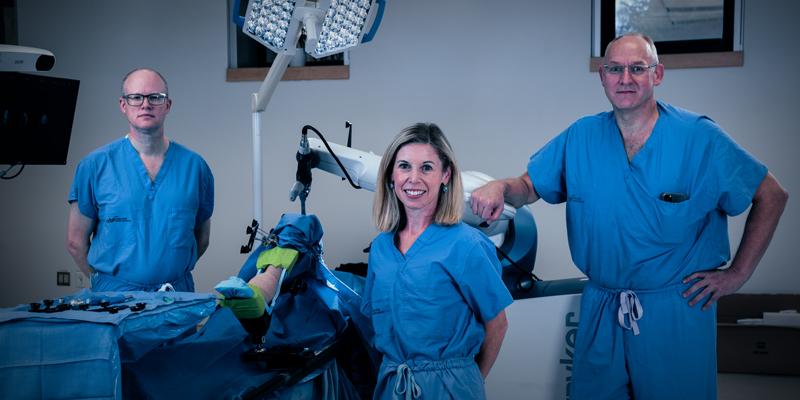
Originally published on Saltwire Network. Image: QEII Foundation.
A mechanical assistant will help orthopedic surgeons in Halifax put a more personal touch on hip and knee replacements.
The Mako SmartRobotics system will be put to work later this month at the QEII Health Sciences Centre with the goal of increasing the precision and success rate of these procedures.
“When something fails and needs to be redone, it takes a lot more time, it takes a lot more resources, the complication rate’s higher, the length of stay is higher, the costs are higher,” said orthopedic surgeon Dr. Michael Dunbar, who will lead the robotic arthroplasty team at the QEII.
“So if we can prevent an implant from failing - longer in the future for example or not at all - then there’s a real savings to be made there if we can realize that goal.”
Customized surgeries
The $2.5-million robotic system, which was purchased by the QEII Foundation, will help surgeons customize hip and knee replacements for the particular anatomy of an individual patient.
The team will be able to more accurately map out the surgical area with a 3D CAT scan, as opposed to a two-dimensional X-ray, Dunbar said in an interview Tuesday.
A precise map of cuts and implantation boundaries will be programmed into the robotic system.
“So it’s like setting up a flight path for an airplane, a glide slope, meaning once I’ve locked it in, the robot will only let you cut in certain planes,” Dunbar explained, “and when it’s gone through the bone, for example, into the soft tissue, it knows it’s outside the bone so it shuts off.”
A big challenge in arthroplasty operations is avoiding errors known as outliers, he said.
“If I want to cut it at zero degrees and I end up with two degrees, that’s an outlier, meaning I didn’t put it where I wanted to. There’s a small margin of error any time there’s humans involved.”
Individual and health system benefits
Besides reducing the number of “revision” surgeries to fix those artificial hips or knees that stop working, a more precise result will reduce pain, bleeding and recovery times for individual patients.
Although about 1,000 Mako robots have been used in about 500,000 operations across the world, the QEII is only the second site in Canada to use the system.
“We’re just behind in Canada,” Dunbar said. “That’s part of the paradox here, this isn’t new technology, this has been around for several years and highly embraced and it’s increasing exponentially the number of cases that are being done around the world.”
He credited the QEII Foundation, Nova Scotia Health’s innovation office and Dalhousie University for joining forces to make the project a reality.
Although the results so far have been promising, there are many questions around proving the benefits of robotic technology, such as reducing wait times and improving individual patient benefits.
Phase-in approach
Now the Halifax team - Dunbar, Dr. Glen Richardson and Dr. Janie Wilson - can help start providing answers.
“Support from the QEII Foundation and its donors, along with our clinical, academic, research, innovation and business partners, is allowing us to spearhead world class innovation and research through the application of robotics technologies to optimize care and outcomes for patients and families,” said Dr. Gail Tomblin Murphy, vice-president of research, innovation and discovery for Nova Scotia Health, in a news release on the project.
The robotics team will be phased into the QEII’s orthopedics surgery schedule with about two or three operations a day about twice a week for the first few months, Dunbar said.
The project will also help draw surgical students and practising surgeons to Nova Scotia.
“I would anticipate other surgeons will be coming on board to participate in this. … There’s surgeons in training already reaching out saying we want to be part of this so that’s an important part of it trying to bring in more qualified personnel, which raises the bar for everybody by having the robot here. That’s why we’re really excited to have it.”